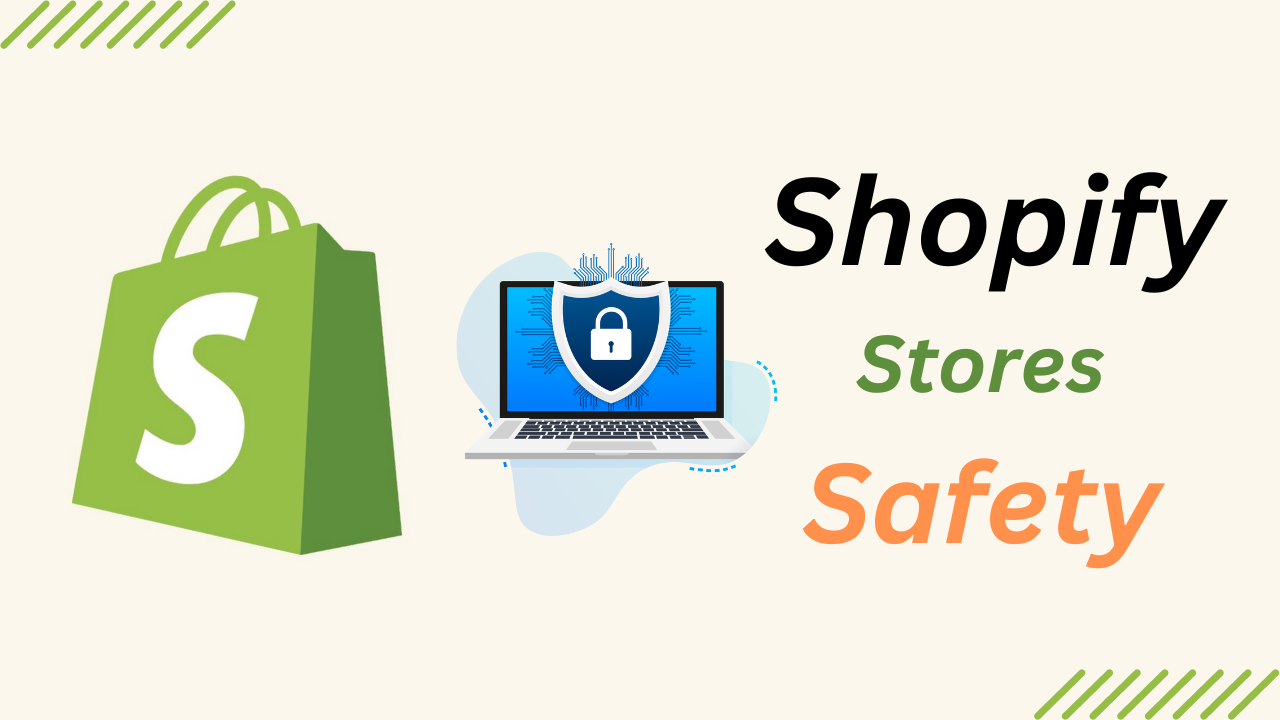Table of Contents
ToggleAre Shopify stores safe?
Shopify is considered safe and secure for online businesses. Shopify implements security measures like SSL protection, regular backups, and advanced security protocols to protect user data from fraudulent activity and data breaches. Additionally, Shopify is PCI DSS compliant, GDPR compliant, and automatically applies Secure Sockets Layer (SSL) encryption, ensuring the safety of customer information and reducing the risk of exposing data to hackers. While there are common scams associated with Shopify, such as the triangulation scheme and store duplicator scheme, being cautious and following best practices can help users avoid falling victim to these scams. There are Expert Shopify designers available in the Market to design a secure Shopify store. Overall, Shopify is a legitimate and trustworthy platform for eCommerce businesses, with millions of businesses worldwide trusting its security features and functionalities.
What are some common scams associated with Shopify stores?
Common scams associated with Shopify stores include the triangulation scheme, the counterfeit return scheme, the duplicate store scheme, off-platform sales scams, and fake stores. The triangulation scheme involves scammers creating real Shopify sites and buying inventory with stolen credit cards, while the counterfeit return scheme involves consumers making a purchase and then returning a cheaper product. The duplicate store scheme involves scammers creating duplicate stores to steal customer information, while off-platform sales scams involve scammers moving sales off trusted platforms to avoid detection. Fake stores on Shopify may look legitimate but are actually scams designed to steal customer information or sell fake or inferior products. To avoid falling victim to these scams, consumers should be cautious of unverified or uncommon payment methods, poorly designed websites, and unbelievable discounts or giveaways. Additionally, consumers should document every facet of the transaction and alert their financial institution if they suspect fraudulent activity. Shopify offers resources for reporting fraudulent activity, and store owners can stay safe by choosing a secure payment gateway, saving proof of transactions, and leaving Shopify reviews.
How to identify a fake Shopify store?
To identify a fake Shopify store, there are several key indicators to watch out for based on the information provided in the sources:
- Inconsistent Sales Patterns: Fake Shopify stores may showcase inconsistent sales patterns, often generating fake sales to create a sense of expertise or urgency.
- Poor Quality Products: Be cautious if the products received are of poor quality, different from what was ordered, or significantly cheaper than expected, as this could indicate a scam.
- Website URLs and Social Media Presence: Check for misspelled URLs, slightly different domain names, or the absence of social media accounts beyond the store’s website, which are common in fake stores.
- Lack of Reviews or Invalid Reviews: Fake stores may lack genuine reviews or have overly positive reviews that lack specific details or personal experiences, often posted in batches.
- Communication Channels: Authentic stores usually provide multiple communication channels like phone numbers and physical addresses. Be cautious of stores with only a contact form and no direct communication means.
- Pricing and Inventory: Extremely low prices, vast inventory in new stores, and generic product descriptions with stolen images can be red flags for fake stores.
- SSL Certificate: Genuine Shopify stores should have an SSL certificate, indicated by a padlock symbol in the website URL, which is often missing in fake stores.
What are some common tactics used by fake Shopify stores?
Fake Shopify stores often use several tactics to deceive customers into thinking they are legitimate. These tactics include:
- Generating Fake Sales: Fake Shopify gurus may create fake sales on their Shopify stores to showcase their expertise and attract entrepreneurs. This is often done to create a sense of urgency or manipulate social proof, making it seem like the store is successful and making a substantial amount of sales.
- Creating Fake Customer Accounts or Using Scripts: Gurus may use tactics such as creating fake customer accounts or using scripts to inflate orders, giving the appearance of a high sales volume.
- Modifying the Website Code: Fake gurus can modify the website code to show many sales, even though no actual sales have been made.
- Friendly Testing: Fake gurus may provide free product samples or discounted items to friends, family members, or acquaintances to give the impression of high customer conversion rates.
- Selling Counterfeit Products: Fake stores may sell counterfeit or low-quality products, often at extremely low prices, to attract customers.
- Triangulation Scheme: Scammers create real Shopify sites and essentially create a dropshipping business, buying inventory with stolen credit cards and shipping the products directly to the customer, while the supplier is left without merchandise and money.
- Duplicate Store Scheme: Fraudsters mimic popular sites and either fail to provide the merchandise or sell low-quality goods.
To avoid falling victim to these scams, it’s essential to be vigilant and look for signs of a fake store, such as inconsistent sales patterns, poor-quality products, lack of customer reviews, and unverified payment methods. Additionally, using tools like Trustpilot and Fakespot can help expose fake gurus trying to sell courses by showing fake Shopify sales
How does Shopify protect user data?
Shopify protects user data by implementing several measures, including:
Data Minimization: Shopify collects only the necessary information to provide its services and deletes or anonymizes it when it is no longer needed.
- Transparency and Control: Shopify provides transparency and control over personal data, ensuring compliance with global privacy and data protection laws.
- Legal Compliance: Shopify Audiences is built to enable merchants to comply with applicable privacy laws of the region where the service is available.
- Pseudonymized Data and Hashed Audiences: When generating an audience list, customer information is hashed before being sent to the marketing platform, ensuring that customer data is protected.
- Confidential Participation: Shopify Audiences does not allow any merchant to find out which other stores use the service, protecting the confidential information of businesses.
- Contribution to the Network: Each merchant does not share more than 5% of the full Shopify Audiences’ customer pool, ensuring that no single audience list can be reverse-engineered to build a customer list.
- Request for Information: Customers are eligible to know where and whom their information is being shared with, ensuring transparency and control over shared data.
- Erasing of Information: When a customer requests to opt-out, their personal information is deleted from data sharing by the store to the audience’s network.
- Data Hosting Locations: Shopify stores customer data in primary locations, ensuring that customers are aware of where their data is being stored.
- Google Consent Mode v2: Shopify uses Google Consent Mode v2 to handle user consent for personalized advertising, ensuring that event data is not transmitted to Google without valid consent.
- Security Measures: Shopify has security measures in place to protect user data, but cannot guarantee the absolute security of personal information.
By implementing these measures, Shopify aims to protect user data and maintain trust and confidence with its customers and merchants.
What are some red flags to look out for when shopping on Shopify store?
Some red flags to look out for when shopping on Shopify include:
- Outdated Design: An outdated design can indicate a lack of credibility and professionalism, potentially affecting the trustworthiness of the store.
- Slow Loading Times: Websites that take a long time to load can lead to high bounce rates and lost sales, signaling potential issues with the site’s performance and user experience.
- Mobile Responsiveness Issues: If a store is not optimized for mobile devices, it may indicate a lack of attention to user experience and accessibility for a significant portion of potential customers.
- High Bounce Rates: Consistently high bounce rates can suggest that visitors are not finding what they need or that the site is challenging to navigate, potentially impacting the overall user experience.
- Declining Sales: A decline in sales can be a critical red flag, indicating issues with the user journey, checkout process, or overall trust signals in the store.
- Poor SEO Performance: If a store is not ranking well in search engine results, it may suggest issues with optimization, potentially affecting visibility and organic traffic to the site.
- Inconsistent Branding: Mismatched colors, fonts, or messaging can confuse customers and weaken the brand identity, signaling potential inconsistencies in the store’s presentation and professionalism.






Very informative blog. Thank you….